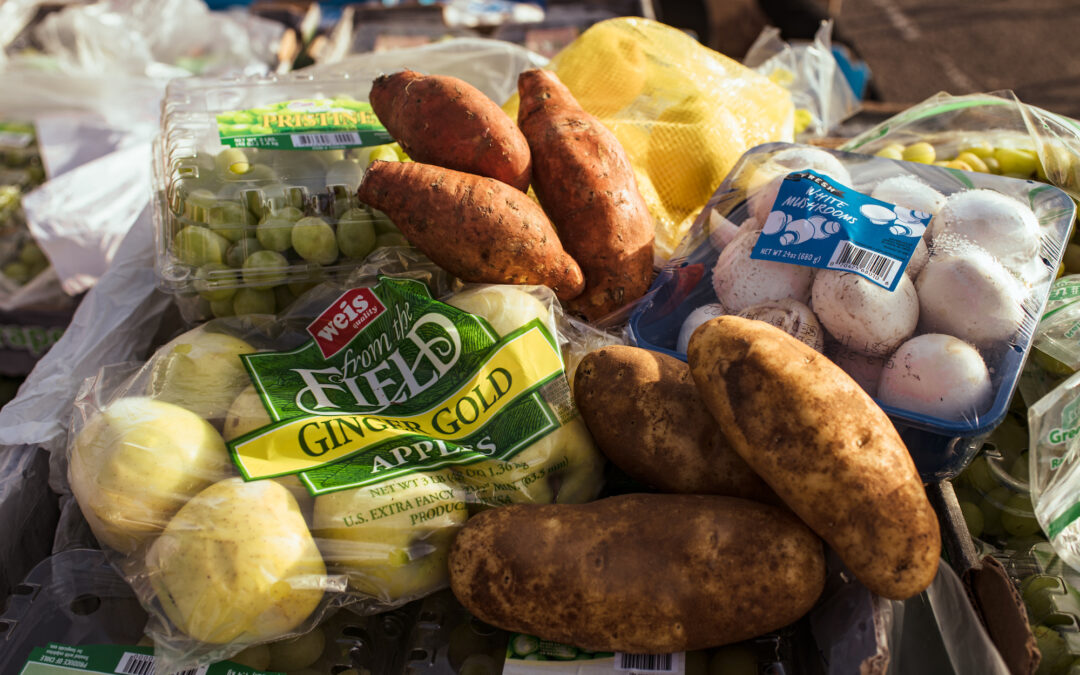We rescue food six days a week from grocery stores, restaurants, farms, and caterers. But why does the food need rescuing?
Food waste is a huge issue in our country. According to the USDA, 30%-40% of our total food supply goes to waste.1 And we’re not just talking about that half of a burrito that you couldn’t manage to eat last week. Food waste often happens before it ever makes it to your dinner table.

At OneGenAway, we see an opportunity in the statistics. Over a third of our food supply goes to waste, and yet, 10% of people in our country suffer from food insecurity.2 That means hunger is not a supply issue; it’s a logistical issue. So, we seek to intercept food while it is still healthy and viable, before it goes to waste, and redirect that to families in need.
According to the USDA’s Food Recovery Hierarchy, feeding people is the second preferred method to cut down on food waste after simply producing less food. Since our organization does not work in the industry of food production, we have found our niche in serving our neighbors.
Here are some of the reasons we might rescue food:
1. An item is approaching its expiration date and is pulled from the shelves early.
We work hard to get rescued food either on someone’s dinner table within 24 hours or immediately in the freezer. Most grocery stores pull products, such as dairy, bread, and meat, a few days before the printed expiration or “best if used by” date, but sealed products are often viable for some time past that printed date.
In fact, did you know expiration dates are not even required by law (except for infant formula)?3 These dates are determined by the product manufacturer and often reflect a date range that will reflect the food’s best quality or the minimum shelf life once a product has been opened. Because of this, we are able to use other indicators in addition to the “use by” date to determine a product’s viability, such as its texture, color, and smell (if it is not a packaged product, such as loose produce).
2. An item is rejected by a store due to its arriving temperature being slightly higher than store policy stipulates.
Often, store policy will stipulate that certain items must arrive at or below a certain temperature. For example, let’s say a store can only accept a shipment of cabbage if it arrives at 38°. That means, if a shipment of cabbage arrives at 39°, the store cannot accept it according to its policy, but the cabbage is still perfectly good. That’s where we come in!
3. A food plant may have run into a labeling error that prevents an otherwise good batch of product from being sold.
Sometimes a food plant may accidentally print an error onto its packaging labels, and if that error is caught after the product has gone out for shipment, the product must be pulled even if the food inside is just fine. In that case, we are happy to accept that food!
4. One bruised apple in a bag leads to the whole bag being pulled from the shelf.
Sometimes, one fruit or vegetable in a pre-bagged or boxed bunch will be severely bruised or start to go bad, but that doesn’t mean all the fruit is bad, especially the fruits that aren’t even touching the spoiled one! However, because a store will not combine two bags of apples, an entire bag will be pulled from the shelves if one goes bad. We are happy to sort through those individual fruits and pull out the ones that are untouched and have plenty of life still in them.
5. A farm yields more produce than it can sell.
Operating a local farm takes a lot of administrative labor because, most of the time, people aren’t buying items straight from the ground. Farmers usually place their products in farmers markets and grocery stores, and/or they supply restaurants. However, if a crop produces far more than anticipated, or they are suddenly unable to sell as much as usual, those foods risk going to waste. But not so if we take them off a farmer’s hands!
These are only some of the many reasons we have received food. We are so thankful for our partnering businesses that take the time to set aside for us the good and nutritious food they can’t sell. We couldn’t do it without their commitment to serve their community!
Note: We only give away food that we believe is safe and good to eat. We seek to honor our neighbors with food, never to dishonor them, so we never want to offer table scraps or spoiled items. We believe everyone deserves access to healthy, nutritious foods for themselves and their families.

